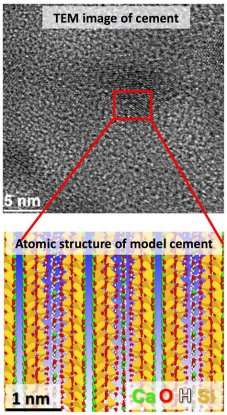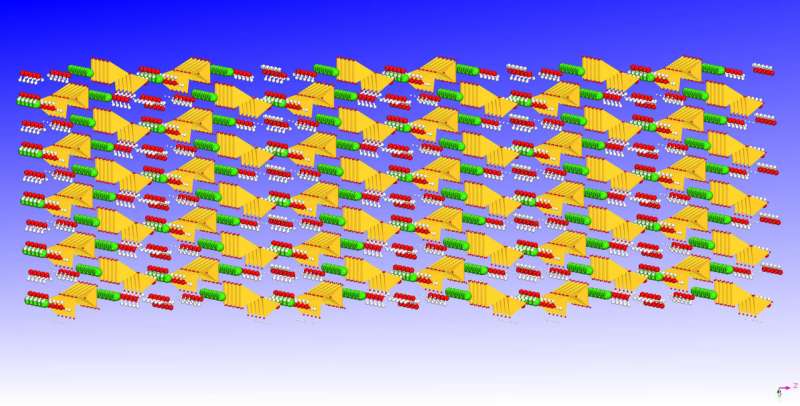Know your cement, get greener concrete

An international team of scientists has created a new database of molecular dynamics models that simulate the properties of cement in all its varieties. It's intended to help fine-tune this component of concrete and curtail emissions in its manufacturing process.
Cement is used to bind concrete, the most-used construction material in the world and a significant source of atmospheric carbon dioxide. Its manufacturing contributes as much as 8 percent of the greenhouse gas to the atmosphere.
Investigate atomic interactions
A new database, called cemff, for cement force fields. In this case, the force field isn't an invisible barrier from a science-fiction story. It's the collection of parameters scientists use to build computer models of atomic interactions. These parameters include the intrinsic energy of the atoms in a simulation system. They are used to calculate how atoms interacts individually and collectively with their neighbors to give the material its properties.
Application of accurate atomistic force field models allows to do computer simulation of various types of inorganic minerals present in cement. Very importantly, it helps academic and industrial researchers to draw upon many types of force fields to make reliable simulations and predictions of purpose-built cement formulations. Cemff could help industry design stronger, more durable construction materials that also curtail carbon dioxide emissions from the manufacture of more than 3 billion tons of cement and concrete a year.

Develop of eco-friendly cements
"The publication of this common database represents a milestone for the field that will greatly increase the impact for molecular modeling in the development of new and eco-friendly cements", says Robert Flatt, Professor of Civil, Environmental and Geomatic Engineering at ETH Zurich and one of the scientific adviser of cemff database project.
Fifteen scientists at 11 institutions worked on the project led by Ratan Mishra of ETH Zurich, Rouzbeh Shahsavari of Rice University and Paul Bowen of EPFL Lausanne. In their research, the simulation of force field models show how the component molecules in cement interact with each other. These microscopic interactions determine how well concrete performs in real-world applications and allow for fine-tuning the material to perform at its best for decades and in the most environmentally conscious way.
"Molecular modeling still requires multiple trade-offs," said Mishra, lead author of the paper and a materials scientist in the group of professor Flatt. "The typical example is time versus accuracy, but more importantly, it is essential to recognize what specific models are good at and what they may be challenged with." Cemff will allow researchers to have a more comprehensive view on this question and to select the best approach for the problem they are tackling.

Reduce the carbon footprint
Cement consists primarily of calcium silicates that react with water to produce the hardened material that confers mechanical properties and durability to concrete. Nearly 60 percent of carbon dioxide emissions from cement production come from the decomposition of limestone, the source of calcium in cement. To reduce the carbon footprint, manufacturers often supplement the mix with clays, waste materials like fly ash and recycled materials.
These all influence the mechanical characteristics and resilience of the product; that is why there is a need for simulations at nanoscale that let manufacturers test mixes for strength and durability even before making real cement.
"I hope the open format and international base of the cemff database will encourage both the modeling and experimental community to create solid benchmarks to help understand and predict more accurately the properties of the most-used material on Earth and help us build a more sustainable future," says Paul Bowen, professor at the Powder Technology Laboratory of EPFL, and initiator of the project.
Provided by ETH Zurich




















